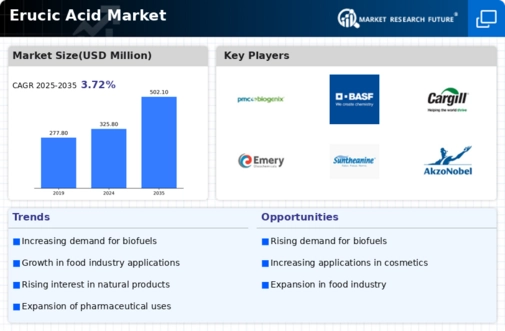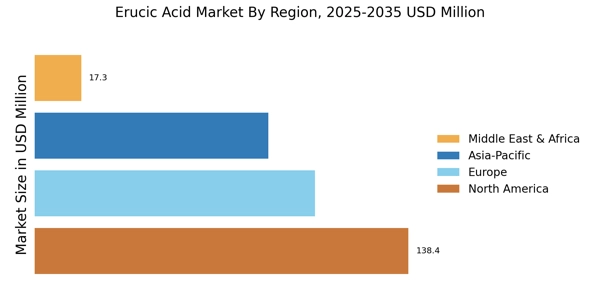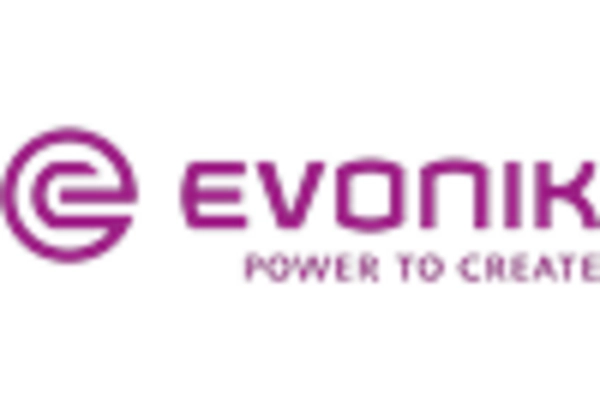Rising Demand for Biofuels
The increasing emphasis on renewable energy sources has led to a notable rise in the demand for biofuels, which prominently includes erucic acid. This compound is utilized in the production of biodiesel, a cleaner alternative to fossil fuels. As countries strive to meet stringent environmental regulations and reduce carbon emissions, the erucic acid market is likely to experience substantial growth. According to recent data, the biofuel sector is projected to expand at a compound annual growth rate of over 10% in the coming years. This trend suggests that the erucic acid market will benefit from the heightened interest in sustainable energy solutions, potentially leading to increased investments and innovations in production technologies.
Growing Awareness of Health Benefits
There is a rising awareness among consumers regarding the health benefits associated with erucic acid, particularly its potential role in cardiovascular health. As health and wellness trends continue to gain traction, the erucic acid market is likely to see increased demand for products that highlight these benefits. Educational campaigns and scientific studies are contributing to a better understanding of how erucic acid can be integrated into a balanced diet. Market forecasts suggest that the health food segment, which includes erucic acid-rich products, could grow by approximately 6% over the next few years. This growing awareness indicates a favorable outlook for the erucic acid market as it aligns with consumer preferences for health-oriented products.
Expanding Applications in Food Industry
The food industry is witnessing a growing interest in erucic acid due to its unique properties and potential health benefits. Erucic acid is being explored for its applications in food additives and emulsifiers, which enhance the texture and stability of various products. As consumers become more health-conscious, the demand for natural and functional ingredients is on the rise. The erucic acid market is likely to capitalize on this trend, with market analysts estimating a growth rate of approximately 5% in the food sector over the next few years. This expansion indicates a promising future for erucic acid as a key ingredient in health-oriented food products, thereby driving the overall market.
Technological Advancements in Production
Technological innovations in the production of erucic acid are playing a crucial role in shaping the market landscape. Advances in extraction and synthesis methods have led to more efficient and cost-effective production processes. These improvements not only enhance yield but also reduce environmental impact, aligning with the growing demand for sustainable practices. The erucic acid market is likely to benefit from these advancements, as manufacturers seek to optimize their operations. Recent studies indicate that the implementation of new technologies could potentially increase production efficiency by up to 30%. This trend suggests a competitive edge for companies that adopt innovative practices, thereby fostering growth in the erucic acid market.
Increased Research and Development Activities
The erucic acid market is experiencing a surge in research and development activities aimed at exploring new applications and enhancing product formulations. Researchers are investigating the potential of erucic acid in pharmaceuticals, cosmetics, and industrial applications, which could open new avenues for market expansion. The focus on R&D is driven by the need for innovative solutions that meet evolving consumer preferences and regulatory standards. Recent reports indicate that investment in R&D within the chemical sector is expected to rise by 7% annually, suggesting a robust pipeline of new products and applications for erucic acid. This trend may significantly contribute to the growth trajectory of the erucic acid market.


















Leave a Comment